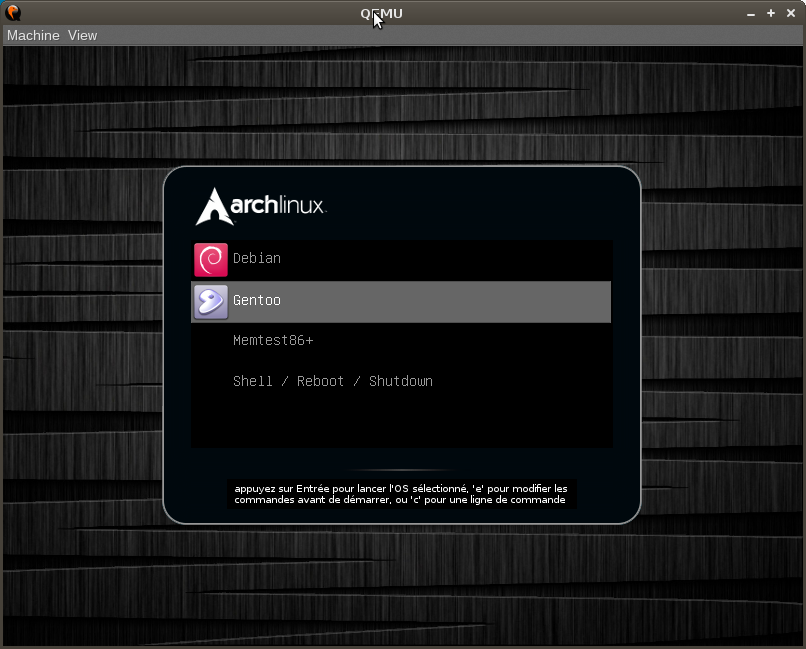I had this problem once and it turned out I needed to remove a preexisting theme from the /boot/grub/themes folder because the one in there overrode the one I installed. Feb 25, 2016 - I had this problem once and it turned out I needed to remove a preexisting theme from the /boot/grub/themes folder because the one in there.
[Grub2] Ettery theme Ettery is Grub2 theme. This theme is based on • ZorinOS grub2 theme (code) • (icons) Designed primary for 1920x1080 resolution, but should work for common resolutions as well. (not tested) For further customization use to add/remove/change/rearrange entry and etc. Quick install guide Note: There is install.sh script from original ZorinOS theme that automates install process, but it is not tested with this theme, therefore I recommend manual installation. Preparation Find out supported resolution by your grub. • Reboot to grub • Open command line by pressing 'C' • Enter vbeinfo • Check for maximum supported resolution.
These days, a lot of Linux users have one distro on their main machines and do everything they can to boot into a usable desktop as fast as possible. Those of us who dual-boot multiple distros — or even OSes — though, still have to stare at the bootloader screen for a few seconds every time we power-cycle.
So why not put a new coat a paint on that tired, old text-based menu? Pull up a terminal, and we'll make booting something to look forward to. The majority of Linux distributions today use either GRUB, the Grand Unified Bootloader, or GRUB 2, a rewrite of the original GRUB that adds new features — including themeability. Although it is rock-solid, the does lack a bit in the flair department. If you are on a distribution that uses the legacy GRUB (such as Fedora or openSUSE), one of the simplest steps you can take is to switch to GRUB 2 instead. There is also a derivative of GRUB 2 to consider: Burg, the Brand-new Universal loader from GRUB. Like GRUB 2, it offers simple support for both graphical- and text-mode theming, but adds a few additional features, such as collapsible menus.
Yamaha psr 423 review. Last but not least, if you use Apple hardware you may use the rEFIt bootloader to switch between Mac OS X and Linux. It comes with a slick looking graphical theme, but you are not limited to the default look and feel. Lady gaga bad romance chew fu remix vimeo.

We'll take a look at each of these bootloader theming options in turn. GRUB 2 adds an array of theming options to GRUB Legacy's traditional text-menu boot screen. The format consists of a text file that lists fonts, colors, and bitmap components, and defines their onscreen layout. Themable elements include the background image, progress bars, and 'styled boxes' — which are akin to window-manager-like box definitions; you can specify images for each corner, the left, right, top, and bottom sides, and the space in the middle.
There is a lot of flexibility here, but you cannot alter GRUB 2's essential presentation of the boot choices; you get a list of bootable kernels with human-readable names, and you can alter how it is rendered, but you can't rearrange it entirely. You can use HTML or SVG colors, or comma-separated RGB triples, and you can use bitmap fonts. There is a complete to GRUB 2's theme format on Colin Bennett's GRUB 2 site; he worked on the theming functionality in 2008 for the Google Summer of Code. Both Ubuntu and Debian use GRUB 2 by default, so if you use either of those distros you can jump right to the theming section. Fedora users can GRUB 2 instead of GRUB Legacy through the distro's package management system. OpenSUSE users have a bit harder task, as the distro does not currently package GRUB 2; however it can be from source — the dependencies are minimal. Of course, that limitation only applies if openSUSE is the only Linux distribution you intend to install; because both GRUB and GRUB 2 install to the master boot record (MBR) of the hard disk, which you use is OS-independent.

Thus if you dual-boot between openSUSE and a GRUB 2 distro, you can simply install GRUB 2 through the second distro. As is always the case where bootloaders are concerned, though — use caution. If you don't follow directions, you can wipe out the bootloader and be faced with the highly inconvenient task of re-installing from other media. The Ubuntu community wiki contains some of the most comprehensive GRUB 2 documentation, including how to tweak existing themes and define your own theme. The instructions appear to be a bit out of date, however, in respect to the file that you need to edit — GRUB 2 stores configuration files in /etc/grub.d/; the theming commands seem to have moved to the 00_header file. If you intend to do some customizing, start by simply image.